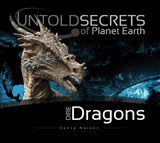
Marine Life Survived Dinosaur Extinction
LiveScience: “Dinosaur-Killing Space Rock Barely Rattled Algae” The line in the sand—or sediment, as the case may be—that supposedly marks the end of the dinosaurs did not mark the end of marine life.
Many old-earth scientists believe evidence of an asteroidal impact is preserved in the fossil record at 65 million years ago, at the K–P (formerly known as the K–T) boundary. That boundary marks the end of Cretaceous sediments (symbolized by K from the German name Kreidezeit) and the beginning of Paleogene sediments (hence “P,” which used to be known as the lower Tertiary for the “T”). But while old-earth scientists believe the dinosaurs disappeared for good, researchers report that marine life bounced back within just 100 years or so of the extinction event.
The finding goes against previous research that suggested the marine life resurgence took millions of years.
The team of scientists examined the molecular remains, i.e., sterane, of microorganisms, which do not leave hard fossils behind but instead organic residues. Writing in the journal Science (see “Rapid Resurgence of Marine Productivity After the Cretaceous-Paleogene Mass Extinction”), the team reports that although such organisms were reduced during the extinction event, it wasn’t long until they thrived again.
The finding goes against previous research that suggested the marine life resurgence took millions of years. However, one critical scientist, Henk Brinkhuis of Utrecht University, pointed to the limited scope of the researchers’ investigation—which was exclusively one Danish sedimentary layer—as perhaps being unrepresentative.
In the young-earth understanding of geology, the K–P boundary, when it is found in local sediments, marks either volcanic or asteroidal activity during the catastrophic Flood year. (Volcanic activity can also produce the chemical deposits identified as from a meteorite.) The fact that dinosaurs do not exist in the fossil record beyond the boundary does not mean that they went extinct at that time; but, rather, that the conditions for mass fossilization no longer applied. (The Flood/post-Flood boundary in the fossil record is still an issue of debate among young-earth creationists, but many place it at or near the K–P boundary.)
What about the organic residue from microorganisms? Without looking at the Danish sediments ourselves, we tend to agree with the scientist who criticized the lack of representativeness of the studied sediments. The catastrophic Flood year would have impacted marine life as well, since it was a marine catastrophe that overtook the land, with threats coming from volcanic activity and fast-moving sediments. If the fluctuation in organic residue is consistent across global sediments (which seems not to be the case), creationists can interpret it as the near-loss and then recovery of marine life either from one period of the Flood year to another period, or from the Flood year until the period after the Flood year.
For more information
Remember, if you see a news story that might merit some attention, let us know about it! (Note: if the story originates from the Associated Press, Fox News, MSNBC, the New York Times, or another major national media outlet, we will most likely have already heard about it.) And thanks to all of our readers who have submitted great news tips to us.
(Please note that links will take you directly to the source. Answers in Genesis is not responsible for content on the websites to which we refer. For more information, please see our Privacy Policy.)
Recommended Resources

Answers in Genesis is an apologetics ministry, dedicated to helping Christians defend their faith and proclaim the good news of Jesus Christ.
- Customer Service 800.778.3390
- Available Monday–Friday | 9 AM–5 PM ET
- © 2025 Answers in Genesis



